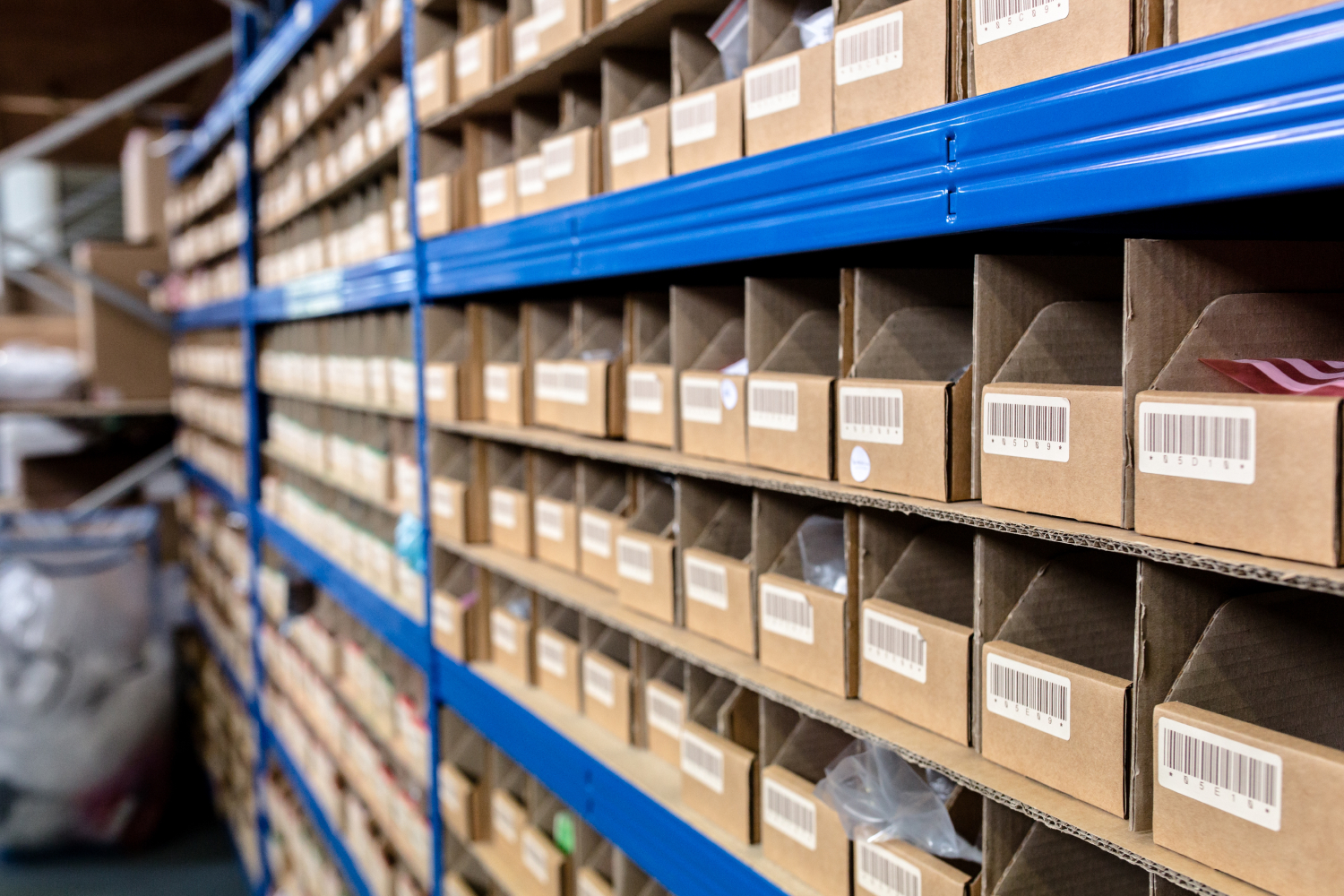
Product Storage Best Practices
Product storage is more than loading goods in a box and keeping them on a shelf until they’re ready to be sold. Like any aspect of logistics, many layers of strategy and optimization go into the process.
But with a broad objective like product storage, there’s too much to cover for just one brand or organization. Product storage is a group effort by manufacturers, packagers, shipping partners, and all logistics participants.
That’s why an overview of product storage best practices can benefit everyone engaged in the process, whether creating the following great consumer product or operating a next-gen warehouse with the latest inventory tech and automation tools.
Besides, product storage is at the heart of the physical goods markets and is required to ensure the safe, secure distribution of all our essential items and luxuries.
Without best practices as the backbone for storage at every stage of the product life cycle, risks start mounting throughout the supply chain journey.
Let’s dive into the best practices of product storage in today’s economy, as well as offer some tips to help brands create products that make life easier and safer for all workers and consumers.
What Are the Types of Product Storage?
Every product has a unique set of properties and attributes that require certain storage practices. Fruits and veggies, for instance, are highly perishable compared to tech components, cleaning supplies, or non-consumable dry goods.
Here’s an overview of the five main types of product storage and related best practices that brands should know about when bringing goods to market.
1. Dry Storage
The most basic, straightforward form of storage still requires strategy and supervision. Dry storage accounts for the majority of storage, including a wide array of consumable products and supplies.
Restaurants, for instance, use dry storage spaces to keep cans of veggies, flour and sugar, cereals, rice, and packaged foods for quick and direct access.
In high-capacity warehouses, dry storage may include apparel, plastic, wood products, simple technical components, essential appliances, and other items that can be stored safely in bulk.
Dry storage may be standard, but it’s not necessarily straightforward. Supervisors and employees must store these products with high organization and caution, especially when dealing with large arrays of shelves and heavy machinery to access containers at scale.
From the manufacturer’s standpoint, dry storage packaging must be relatively lightweight, accessible, and durable, accounting for the possibility of exposure to oxygen, moisture, and temperature variations.
Based on the region and seasonal changes in atmosphere and weather, dry storage settings may fluctuate dramatically. Brands must anticipate these changes with packaging that can withstand various potential challenges.
2. Refrigeration
Refrigerated storage is required for most perishable products, ranging from produce and proteins to more sensitive specialty goods and even some non-consumable items.
The ideal temperature range for a refrigerated environment is between 35 and 37 degrees, meaning that even slight fluctuations outside the norm can devastate extensive inventories.
Therefore, refrigeration is a risky but necessary aspect of product storage in warehouses and retail environments.
Packaged goods producers must consider the pitfalls and challenges of complex refrigerated storage centers and create products capable of withstanding electrical outages or human error.
Barrier properties that regulate temperatures and keep perishable goods fresh are most important when designing packaging formats in these settings, with materials such as Mylar or specialized thermoplastic layers offering strong protections and fewer risks.
3. Frozen Storage
Frozen goods are increasingly popular worldwide, and large freezer storage centers represent a growing market share segment. While frozen storage tends to be less risky due to the reduced chance of product expiration, this storage approach is not free of challenges.
With frozen goods, products can be prone to warping, freezer burn, container degradation, and other forms of damage. The risk of electrical issues can also lead to significant losses if power is not restored in a short period.
Certain packaging materials and formats are optimized to keep products frozen longer and mitigate the risks of a frozen storage environment, so brands must implement these changes when introducing frozen products.
4. Climate-Controlled Storage
Unlike dry storage or refrigeration and frozen storage units, climate-controlled zones aim to maintain specific atmospheric conditions to ensure the longevity and quality of products.
These storage environments are typically 10 to 20 percent more expensive to maintain, with additional risks if systems don’t function properly.
Moisture control through humidifiers and dehumidifier units is common in these settings, as well as air purifying and conditioning units.
Products in these environments are often more sensitive and high-priced, including specialty foods, tech components, pharmaceutical and medical materials, or industrial supplies.
5. Hazard Storage
Certain materials are designated as hazardous based on regulations from organizations like OSHA and the EPA. These are products such as fuel, agriculture or industrial chemicals, fertilizers, pesticides, or construction materials like concrete treatments.
Hazard storage is highly variable based on the types of products in question and how they are organized and accessed. Producers and storage staff must work cooperatively to ensure high standards in processing, inspection, labeling, usage, and proper disposal and removal.
Since regulatory agencies explicitly outline hazard storage compliance, producers are typically limited in choice when packaging these products, which can simplify the process by removing variables.
Storage in Transit and Retail Settings
Warehouse storage is given the most attention when outlining best practices since products spend most of their time in these controlled environments.
However, the warehouse is just one of many points on the supply chain, as products must navigate complex transit routes via multiple modes of transportation to reach their endpoint.
Manufacturers must balance their product storage strategies with equally strong shipping and transit practices to minimize risk. Methods that may work well in a warehouse might not apply to shipping by air, rail, ocean liners, and trucks, and the same is true in reverse.
While brands might consider shipping another category altogether, they can’t overlook the importance of best practices in these areas to ensure the safe and effective delivery of products to their destinations.
How Can Packaging Improve Product Storage?
Storage practices make a difference in product quality, safety, and user experience. Producers may not control this process but can create effective packaging for better storage and delivery.
Here’s why packaging matters and what brands should consider.
Safe and Secure Storage
Minimizing safety risks is priority number one for producers in all sectors, and packaging is a vital determinant of these outcomes.
Brands should research the most effective package formats and materials to ensure that products are effectively contained during storage, accounting for variations in temperature, atmospheric conditions, insect infestations, and other potential hazards.
Rigid packaging formats like hard plastic, paperboard, and glass may provide safe storage in some cases, while flexible bags, pouches, and film wraps also offer distinct advantages.
With flexible materials like Mylar, brands can keep costs low while creating custom packaging that withstands the many pressures of storage and shipping.
Efficient Use of Space and Materials
From the warehouse and retail perspective, efficiency is everything when processing inventory and managing the safe intake and distribution of products.
Lightweight materials, which take up less space and are easier to track, can improve the storage process with greater flexibility and reduced resource demands.
Whether producing food, supplies, components, or specialty products, brands must always look for ways to make packages easier to store while ensuring high standards of strength, stability, and storage safety.
Stronger End-User Experience
Warehouses, fridges, and freezers are often the main focus when discussing product storage best practices, but the user experience can’t be overlooked.
Whether discussing snacks, cleaning supplies, or batteries, proper packaging helps consumers store their favorite products safely while ensuring accessibility and convenience.
Consumer protection is also critical to a complete product storage plan, especially when dealing with goods with the potential to be hazardous when ingested or misused.
This explains the recent rise in child-resistant packaging standards and why more brands are prioritizing child-proof containers and pouches in their packaging solutions.
Dymapak Gives Brands the Edge in Product Storage
Today’s consumer goods brands need every advantage, including optimizing packaging for product storage best practices.
It’s no longer sufficient to create a good-looking and functional product package; every aspect of the supply chain must be considered in terms of efficiency, safety, design, and storage methods.
In other words, you can’t leave anything to chance when designing your next product package, so it may be time to bring in the experts.
Dymapak works with leading brands across all industries to provide quality packaging, addressing all the demands of the modern supply chain while delivering a great user experience for consumers.
If you’re ready to meet the challenge of today’s logistics and product storage environment, Dymapak is here to make your products the best they can be.
Sources:
Five Simple Ways to Improve Warehouse Efficiency | Supply Management


